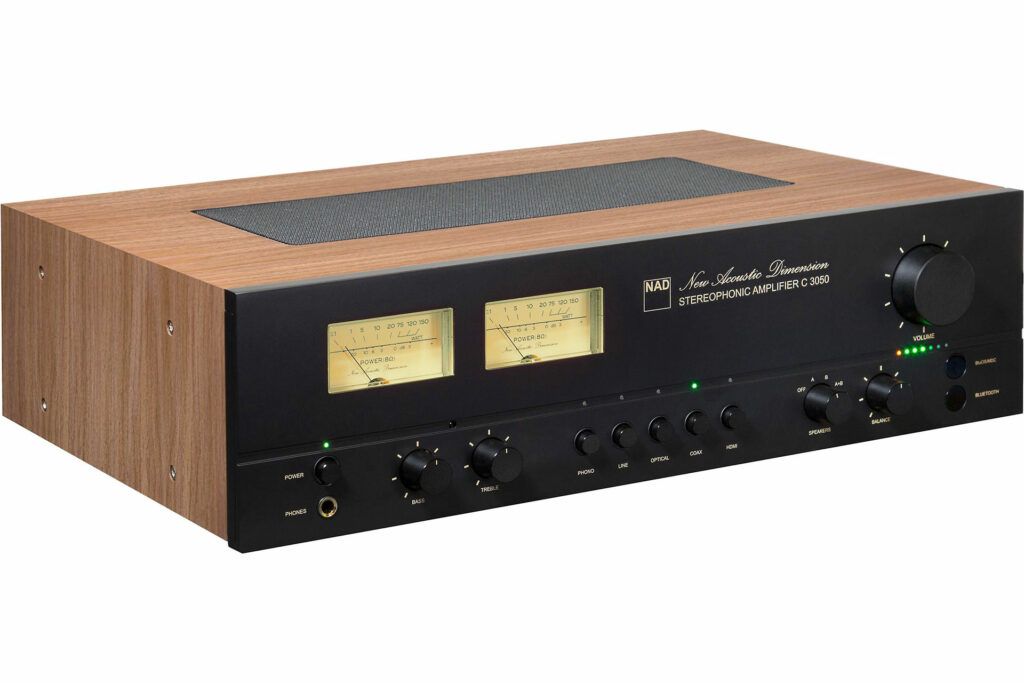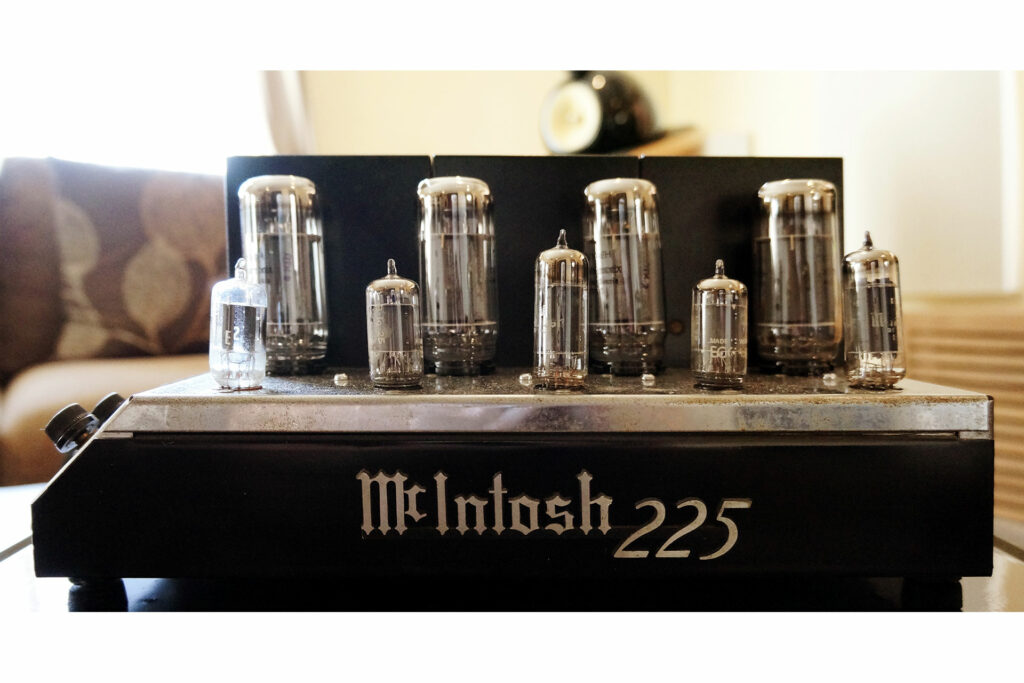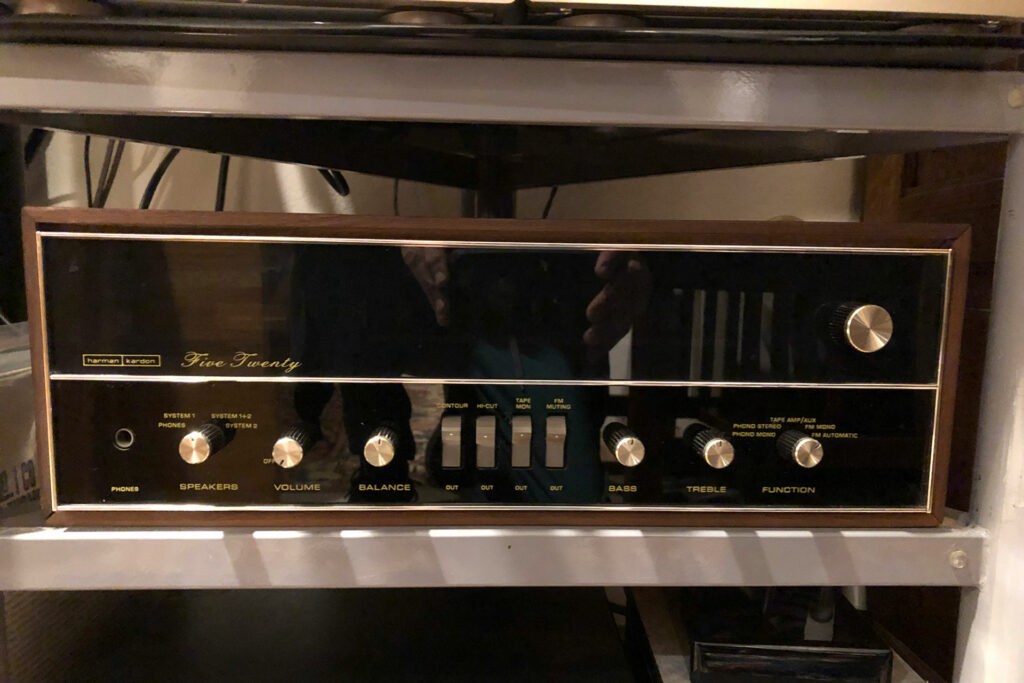There are a lot of varied reasons why people are into the audiophile hobby. Some just love listening to music, and that passion drives their electronics-buying decisions. Some audiophiles are more into audio gear, so that the music is second to the buzz that comes from finding that next sonic benefit. Others just love technology. Some like to have great sound when they travel or go to the gym. One of the more exciting categories of enthusiasm for high-end audio is collecting vintage gear.

Other Hobbies Have Been All-In on Vintage Gear Long Before the Audiophile Hobby
Vintage gear, or products, is an established part of many hobbies that are tangential to the audiophile hobby. Our old friend and former AudiophileReview.com editor Steven Stone wrote for Vintage Guitar Magazine, which covers, well, vintage guitars. Watch an hour of the Mecum Auctions on cable TV and you might be shocked at what some Baby Boomers pay for vintage cars. It can be jaw-dropping. Up until recently, the audiophile hobby wasn’t much into its past, but that is changing in recent years as newer audiophiles are bringing a new perspective to the hobby.

Andrew Robinson Was Way Ahead of the Curve When It Comes To Vintage Audio
Somebody out ahead of this curve was our longtime editor at HomeTheaterReview.com and modern-day YouTube.com influencer Andrew Robinson. Back when I was helping finance Robinson’s first feature film, April Showers, he was spending his weekends going to garage sales, flea markets and pawn shops, looking for low-cost vinyl, as well as any potentially cool audiophile finds. Back then, you might find a really cool LP that could be had for $2 and was well worth the investment. Those days seem to be long gone with the resurgence in popularity of vinyl but, if you think about it, collecting vintage vinyl is directly coupled with the rise in popularity of vintage audiophile components. I remember Robinson telling me about finding classic McIntosh gear, as well as tube-tastic, vintage Audio Research gear in some of his travels. Just like antique collectors, nobody can buy all the cool items that they find, but often the thrill of the hunt is more than half the fun anyway.

They Don’t Build Them Like They Used To (or Do They?)
Another somewhat well-known YouTube.com voice made his post-mainstream, tech media bones with a video about how his 1970s system is better than your modern system. He’s high on a golf ball-sized crack rock, as that premise is an ignorant endeavor and basically professional as well as editorial malpractice. Yes, that Betamax machine from 1981 might still be able to play a tape (you don’t really have one, do you?), but that doesn’t mean that you should. Celebrating the quirkiness and underdog nature of the long ago dead format or the time-tested reliability might be why you plunk down a few bucks on an AV boat anchor. MartinLogan CLS speakers are iconic, but don’t really work today. Tube amps from the old days sound like the old days, and that’s not good.
Let me be clear, there are a few (very rare) instances where old audiophile gear performs better than today’s gear. Today’s modern speakers are so vastly superior to audiophile speakers from the past that it isn’t even funny. They use fancier crossovers, benefit from CNC machine cabinetry, often come with custom or exotic finishes and are almost always easier to drive. Then again, there are some iconic speakers of the past that really speak to me. A pair of vintage 1993 Bird’s Eye Maple THIEL CS 3.6 floorstanding speakers might need a nuclear power plant to drive effectively, but they are an important part of my past in the hobby and one hell of an eye-catcher – even today.
Modern electronics are even more superior to vintage ones, but that’s not really the point here. Softer-sounding, cool-as-hell-looking older receivers, separates and especially graphic EQs can be just too cool to pass up. Those vintage blue meters on McIntosh gear speak to younger audiophiles in the classic market, as they do to older audiophiles, who today buy the Binghamton, New York-made audiophile electronics. Making a smiley face pattern on a vintage Pioneer graphic EQ is not a good idea in the practical world, but it is a funny and quirky retro technology statement for those who might find an EQ component appealing, as long as it isn’t in the loop of your best audiophile system. An EQ like this is far more of a prop than anything else.
Source components might be the most aspect of vintage gear. Before the life-altering Palisades Fire, I was looking at all sorts of vintage audiophile source components for my sadly not-yet-built video studio. I was looking at “for parts only” items (that means the unit might power up, but not fully work) on eBay.com and the price to acquire such gear was going to get me a very cool visual statement at a very fair price. I was looking at a lot of tape machines, ranging from all sorts of Nakamichi cassette decks to Studer and Revox reel-to-reel machines, and so much more. Vintage turntables can be a solid investment for a FutureAudiophile.com reader on a budget. Vintage digital is likely the hardest category to go classic on, but having a first-generation Apple iPod sitting next to your 32-bit modern DAC might be a visual statement about your system and how it can do it all.

New Components That Look Like Vintage Audiophile Components
So many companies today make gear that looks old, but is packing bleeding-edge technology. JBL’s L52s (read the review) look like the speakers in the iconic Maxell Cassette Tape advertisement, but they contain all the modern Harman technology that can be packed into a vintage form factor. PSB has vintage-looking speakers that have not only vintage audio appeal, but also the best that Paul Barton and his team can deliver today.
We’ve already discussed McIntosh gear, but there are so many other brands feeling the vintage vibe in the modern era. One that always makes me stop at audiophile shows is Western Electric. While their tube gear is very retro in looks and perhaps in design, it is also very high performance. Vinnie Rossielectronics might be my favorite-looking audiophile components on a visual basis. Rossi’s industrial design is gorgeous, like a modern-day Cello component with its soft-looking metal finish. By no means is this a complete list, but it does show you that many of the top audiophile companies are paying attention to the vintage audiophile movement, just as you and I are.

Restoration is Now Much More a Part of the Audiophile Hobby Today
Audio Research gets top grades from its legacy clients, in that they service any and all of their past gear to their clientele’s delight. ARC resale value is among the best in the business, and it is pretty obvious why. If you were to stumble upon, say, an old Audio Research SP9 tube preamp at a killer price, you know that they unit can go back to the factory and get fully restored.
A friend of mine called me when he found some vintage 1964 Mcintosh gear, and I had Steve Rowell of Audio Classics tune my amp up. New solder points. New tubes. That was only the start and, when Rowell was done, I ended up selling the classic McIntosh 225 for more than double the retail price to a McIntosh collector in Japan. I had my fun with the amp (cooler to look at than to listen to, in reality) and I am glad that it found a good home.
Wilson Audio is another favorite brand of mine and a very important part of my start in the audiophile business. They have a program that lets you send your speakers back to Provo and get them fully checked out. A pair of Wilson WATT Puppy 3.2 speakers is a part of the past, but by no means suck. Could a young audiophile procure a pair of classic Wilsons at a fair price? They sure could and, when the time is right, they could go back and get dialed in. A vintage Wilson/Chi-Fi system with, say, a GaN amp could be super badass, as well as affordable. Is it as good as modern gear? No, but it has a way lower price threshold and offers a compelling upgrade path that could get more and more younger people into the hobby.
Beyond Rowell’s shop, there are a handful of really good audiophile service places in the United States. I wrote about these in the early days of this publication, and they make it pretty easy to keep your vintage audiophile components singing for years into the future. Supporting these all-important service centers is equally as important as supporting your local stereo store.

Final Thoughts on the Vintage Audiophile Movement …
There is no question that the vintage audiophile movement is a real live thing. The concept of owning only one of any one given component feels a little out of sync with the audiophile marketplace today. The concept of the audiophile hobby being an “or hobby” versus an “and hobby” is well-established. However, perhaps that is changing? The impact on the value of all audiophile gear could be positively impacted by this phenomenon. The more gear people own, the more enthusiastic they are about the hobby. It is no different than a collector with a large watch winder or a huge, fully-stocked wine cellar. This trend could oddly end up being a very good thing for the audiophile hobby.
Where careful attention needs to be paid is with younger audiophiles. Getting into rock-solid vintage audio gear can be a great jumping-off point for a new and/or aspiring audiophile. It can be cost-effective, too. Modern gear is almost always better-sounding, but modern gear sometimes comes with a higher price. Every once in a while, a chance to buy something really cool and fantastic comes along, and why not take advantage of said advantage? Most audiophiles will always chase the Nth degree of performance, and that is a very good thing. At the same time, having a thriving and robust vintage audiophile market is also a very good thing.
Do you collect any vintage audio gear? Do you have a great “garage sale” find to share with us? Have you restored any vintage audiophile gear? Tell us about how you feel about the vintage audiophile movement in the moderated comments below.




The polarized electrolytic capacitors used in audio electronics & non-polarized electrolytic capacitors in speaker crossovers have a typical lifespan of 25 years. Less if subjected to high: heat/voltage/current. In addition, the electrolytic capacitor industry suffered from a ‘plague’ during the early 2000s that caused premature failures. Both should be born in mind when purchasing used equipment. Depending on quantities a ‘recap’ by an experienced technician can be expensive. Sometimes capacitors with the correct physical dimensions or terminals are no longer available. I ran into this issue when recapping a 40 year old Adcom amp last winter. However I was able to replace the smaller ‘signal’ capacitors that were causing poor (lack of) bass. HTH.
As a very lucky individual who literally grew up in the Hi-Fi industry – my grandfather began his representation of Klipsch and Associates in 1952 – I can share some insight for the “why” vintage audio can be so appealing. I followed grandpa Ray Johnston’s footsteps and have been in the industry for over 40 years including a brief stint with Klipsch (at the time I was the first 3-generation rep for the company), a few years with Magnolia HiFi and now make a surprisingly good living in semi-retirement repairing and restoring mostly “vintage” speakers. It’s really all about Nostalgia – which can be, as I am certain you have experienced, a very powerful motivator. It is what compels many of my clients, mostly my age (just south of 62) or older, to drop thousands of dollars on a component or pair of speakers that are clearly technically inferior to a modern brand-new equivalent. They have vivid memories of “the first time” they heard a really superb HiFi system demoed at the local HiFi store. They bought the pair of JBL L-100, Pioneer receiver and Dual Turntable and now they want to re-create their old college HiFi system in their den or rec room. It’s why my clients will invest sometimes hundreds of dollars restoring their old classic Altec, JBL, Dahlquist, Advent and Speakerlab (a Seattle speaker/kit manufacturer in the 70’s and 80’s) speakers rather than spend thousands on new speakers. Very often, I see older speakers and electronics combined with new gear such as one of the newer DACs that can handle high-resolution digital streams and files. We have seen a lot of younger folks as of recently who are buying vintage gear as their initial investment and then getting advise on how to improve their systems. Of course I’m happy to dispense advise and opinion and refer them to the appropriate store or website. I have enthusiastically turned many on to Future Audiophile, which seems to be experiencing some success with its mission.
I agree, it’s a matter of preference. Hearing/listening is different for everyone. My amplifier is 30 years old… SONY TA-N80ES… I absolutely love it.
If you like it – then it is good.
I don’t care how old the amp is or what it costs.
My hobby is restoring vintage gear. I used to work as senior electronics tech for one of DC’s premier audio (later AV) companies and love bringing some of this stuff back from the grave.
As a collector of vintage watches, the son of a 1960s-70s audiophile, and one who shops for best value, aesthetically pleasing gear… it was a given I’d be drawn to vintage audio. You bet nostalgia is a huge part of it. That said, I was very disappointed with the noise floor and high THD of some vintage components I acquired after lusting after them for so long. I do prefer modern, vintage inspired speakers – I have a pair of Wharfedale 85th Linton’s – but I’m also a sucker for ADS speakers from the 80s of which I have a few pairs. I sold off my perfectly performing 10 year old Parasound amp that I bought used, replacing it with a 30 year old pre owned McIntosh MC7270. The Mac drives some Sonus Faber Sonetto. The Mac was not recapped but inspected and I’ve had no issues. Some thought I was nuts to make that change but I’m enjoying the setup. I’ve had a Thorens TD-125MKII hooked up to a modern Yamaha amp; the SME tonearm needs rewiring, which leads to the biggest issue with vintage gear… finding qualified techs to work on them and of course parts. Across my multiple rigs, I have equipment from the 70s, 80s, 90s, 00s, 10s and 20s, and I believe these systems have great synergy. There’s so many ways to enjoy this hobby and incorporating some vintage gear is a big part of that for me.
It doesn’t have to be vintage but it has to be good. Over the years I have owned many brands most recently NAD. I wanted an FM tuner but the prices for used NAD are high. Finally someone mentioned Onkyo. There are a gazillion AVRs available and a few receivers, I found a pristine TX8255 for $55! They were built from 2008-13 so no cap worries. I bought a used remote for $13. I won’t pretend that the search didn’t take a lot of work but in this case it was worth it. Cheers!
I still want a Nakamichi Dragon tape deck.
Me too.
BADLY